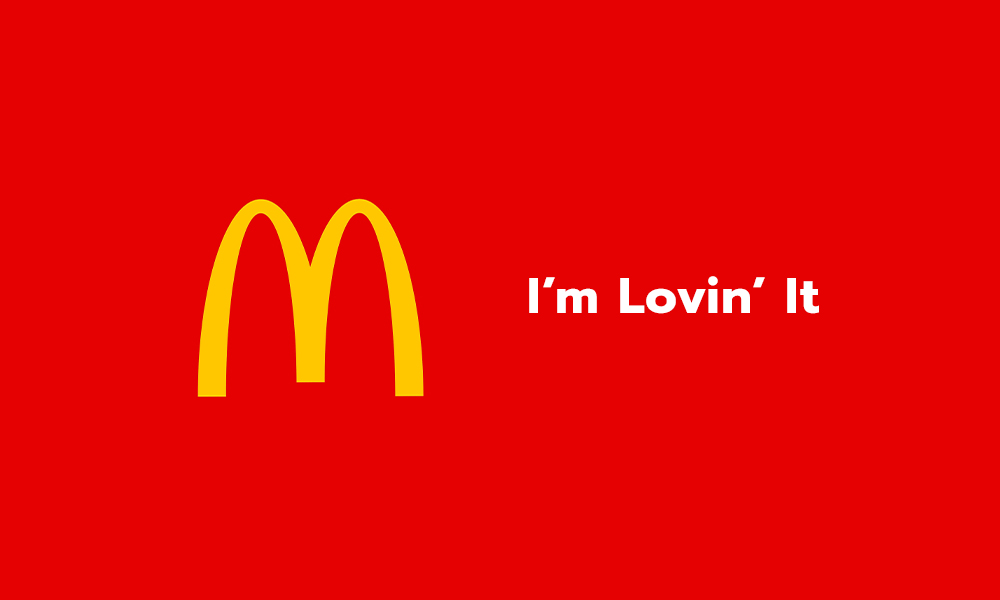Copywriting in 7 Easy Steps

Got a good product, but can’t find the words to say to pitch it perfectly? Maybe you’ve got warehouses overflowing with stock, but can’t seem to sell as much as you want?
Take a step back and a deep breath. You might just need to up your copywriting game
Selling online is a whole new ballgame when customers can’t physically hold items to test drive them and get a feel for things.
This lack of touching your product means that your copywriting (the text that you write to describe product features, its benefits, and why customers should buy) becomes the only way for you to interact and persuade customers.
In today’s article, we’ll be looking at taking you through how you can get started with your copywriting journey.

What Is Copywriting?
We start by asking what copywriting is. It is the process of creating text that persuades target audiences to take action of any kind. Whether it be to buy your product or even something as simple as liking your Facebook page.
Types of Copywriting
1. Brand Copywriting
Think of a brand, any brand at all. What is the first thing you can recall about it?

Nike - Just Do It.

McDonalds - I’m Lovin’ It

KFC - Finger-Lickin’ Good
These are examples of brand copywriting. They’re focused on evoking emotional responses and brand recall amongst consumers.
Brand copywriting can also encompass more than just mere slogans and may also include billboard captions, jingles, commercials, etc. They serve to create a memorable experience for consumers.
Social Media Copywriting
Here, the key is in the phrase “Social Media”. You engage audiences through ads and posts. The unique aspect here is that you have some very different formats to adapt to when going from one social media platform to another like TikTok’s 100 character limit for captions as opposed to Instagram’s 2,200 character limit.

SEO Copywriting
This is all about getting your content ranked on search engine results pages, also known as SERPs. How to get your content ranked highly, on the other hand, would be a whole other article in itself.
For now, a tip would be to keep your content valuable while mixing in a healthy number of keywords and phrases which can be indexed.
Insight Copywriting
This is where you produce educational content that draws from your experience in a certain industry. It could be your industry or one that you happen to have an inside source to give you the 'insider scoops'.
Email Copywriting
Writing emails that are engaging from the headline to your calls to action not only holds a client’s attention but makes them want to commit the energy to click your links and buy your product. This type of copywriting is a challenge in itself.
Copywriting Or Content Marketing?
Differences
Copywriting is done with the intent of making sales. Content marketing may include sales as a byproduct, but it’s not the main intent. We can do content marketing with several different focuses like building brand awareness or even educating like what our blog does.

How?
Secret Formula
1. 4C's
We start by looking at a fundamental principle in copywriting - Clear, Concise, Compelling, Credible.
Clear
Whatever you write has to be understood by everyone. Use small words, short sentences, and even bullet points if you must.
Concise
Convey the most information in as few words as possible.
Compelling
Focus on your readers’ needs, problems, and desires so that they’ll be interested enough to read your copy and find it interesting.
Credible
Draw on other articles, cite studies, anything that’ll give you credibility, and counter the skepticism of your readers.

2. 3F's
Feel, Felt, Found.
This method helps put you on the side of your customers by showing them that you share their struggles and Feel their pain.
From there, you let them know that you have Felt their pain before. Then you go on to hammer it home with a solution that you have Found.
The added benefit of this approach is that it’s not an obvious sell. That won’t set off your customer’s flight response right off the bat.
3. PAS
Problem + Agitation + Solution. A formula that’s respected and has been around for a long time now.
Here, you introduce a Problem right at the start of your copy and then Agitate it by using emotional triggers to make things feel worse for the customer or make their problems seem much bigger than they are. The ending is when you offer a Solution to their problems and save the day for them.
4. Before & After
If PAS was a negative approach, this Before & After approach is more of a positive one.
What you do here is invite your reader to imagine a world after using your solution. You then bring them back to reality and walk them through how to get to that future imagined world with your solution.
5. Story
Let’s face it, storytelling has been around for as long as people have figured out how to draw on cave walls and speak to others.
What you can do in this formula is to think of the classic three-act structure in movies. There’s the beginning, the middle, and the end. There should also be the hero, the bad person, and the hostage.
So, in the beginning, the bad person(your client’s problem) holds the hostage(what your client wants) ransom. In the middle, the hero(your product or service) comes in and fights the bad person. The ending will see the hostage being saved by the hero(the customer using your product).

6. AIDA
This is possibly the gold standard of all copywriting fundamentals. This formula lays out the four steps that one can take to write good copies.
Attention
Simple enough, catch your reader’s attention.
Interest
Now that your headline or caption caught your reader’s attention, generate interest within them for your product or service.
Desire
At around the halfway or three-quarter mark of reading your copy, the reader should desire or want your product/service.
Action
Finally, you call on your reader and motivate them enough to take action by purchasing your product or subscribing to your service.
Step By Step Walkthrough
Those formulae are all nice and well, but how do you implement them, and/or how do you know which one to use?
Here, we’ll put in a disclaimer. All the aforementioned formulae work and are equally powerful when harnessed correctly. What differentiates them is how they are implemented, your copywriting situation, and the kind of audience you are looking to target.

1. Know Your Audience
Speaking of the kind of audience you are looking to target, the first step to writing your copy is to know who you are writing for.
When thinking of this, you’ll want to ask yourself questions like who you are selling to and who you want to sell to. Further to that, ask yourself what do your current customers love about your product or service? What pain points do your customers face? These questions will frame your writing.
If these questions seem similar to what you’d ask in a customer profile, that’s because we asked similar questions in our guide to making your customer profile. You can read our comprehensive guide here.
2. Right Tone
It is said that your tone represents your brand. How you write will tell prospective customers what kind of brand you are - serious & professional, fun-loving, etc.
We’ll look at a quick example for setting your tone with the following:
“Start your online business today with the ultimate omnichannel platform that empowers you to sell everywhere, from anywhere.”
AND
“Why’re you still not selling online? Don’t get left behind while everyone else is getting in on the eCommerce game!”
Here, we see two examples of tones. The first one is serious and professional, and can usually be seen as product taglines or in product descriptions. It delivers everything necessary to get the point across and wants to be taken seriously. The second example is less formal and maybe something used on social media platforms. The tone there is more fun and upbeat.

3. Stress Your USP
For this part, you’ll need to dig back into your company manifesto. What sets you apart from everyone else? What new and unique solutions or benefits do you bring to the table?
The follow-up to this is why your customers should want to be on your side of the camp as opposed to a competitor who offers the same or a similar product. You don’t have to be good at everything, but the trick is in listing down everything you’re good at. Then focus on them in your copywriting.
Bonus tip: if you are still yet to have your USPs sorted out, maybe have a look through our article on that very topic here!
4. Customer Pain Points
Let’s face it, good copywriting is only good when it works and gets conversions. To do that, you’ll need to convince your readers that they are better off with you than without.
Some of the most common customer pain points that we’ve come across in our experience are:
Price/Too Expensive
This is usually associated with your product or service being out of their budget and thus unlikely to buy or subscribe.
Risk/Uncertainty of Quality
Customers are not willing to pay for something which won’t directly and immediately benefit them.
Inconvenience
If you make it difficult for customers to sign up for your services and their problems do not get adequately solved after, it’s just more convenient for them to do without your service. Likewise, if your product is a hassle to use, they won’t be too happy to buy it nor recommend it to others.
Productivity
People want something that makes them more productive and/or more effective in their work or even in day-to-day activities.
The Process
This is somewhat related to the inconvenience factor as well. If customers struggle to navigate through your service from hook down the line to purchase, they’ll drop and run.
Customer Support
Have you tried getting customer service from Digi (a telco service in Malaysia) or Singtel (a telco service in Singapore) lately? It’s an absolute pain. This pain won’t make customers want to go near your service or product any more than they need to.

5. Social Proof
This one can be a very powerful tool indeed. People want the everyday Joe to tell them about your product. Is it a good buy, or is it a good-bye? When you use an influencer, their review may be tainted by the thought that whatever they say is a paid sponsorship by your company.

6. Get To The Point
Again, going back to our formulae, always remember to be as concise as possible to cater to shortened attention spans. Keep in mind that every word you put in has to have a purpose and an intention to it.
7. Just Do It!
We can talk about formulae and steps all day long, but it won’t serve anything as long as you do not actually start writing.
For starters, there’s a reason why the AIDA and PAS methods mentioned above are considered the old hats of copywriting. They have withstood the test of time and they do get results when applied effectively.
However, as we have also stated - it’s marketing, no one size fits all here. You need to not only get started with writing while incorporating the steps we’ve mentioned here into the framework of the formulae but also, you have to test out your copy.
Perhaps your product would be most suited for the PAS framework while another person’s service may be better served with the AIDA one.
You can test out your copy by doing something we call A/B testing. Basically, you run a few different copies. Then you gauge which one performs best. This is also what we know as split testing.
One possible way would be to have two different landing pages with the two different approaches to copywriting applied to them. Then track the results to see which ones get you more conversions(more customers dropping enquiries, or perhaps even buying your product right there).

Remember, no two businesses are the same. It’s always good to do a ground test to confirm which method works best for you and your business.
Extra tip - don’t be afraid to test out everything. From different copywriting approaches to the CTAs and headlines or maybe even your hooks!
Also, refining your copy is something that is a constant journey. Don’t just run one or two tests and call it a day.
Conclusion
Your copy is the very essence of your marketing strategy.
Until you master the secret of good and persuasive copywriting, even the best product or service won’t sell.
We hope that this article has helped shed some light on how you could go about writing your copy that converts!
More articles please read SEO Budgeting: How Much To Actually Spend

